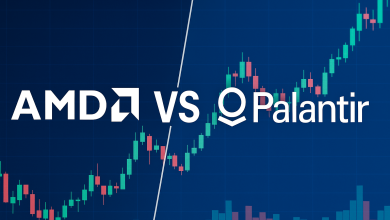Wall Street’s Great Rotation: The Rally Broadens as Cyclicals and Small Caps Steal the Spotlight

For months, the stock market’s record-breaking climb has been a story written by a handful of megacap tech giants. But as Wall Street storms into the second half of 2025, a new, more powerful narrative is emerging: the rally is broadening, signaling a healthier and potentially more sustainable market.
From overlooked cyclical sectors to resilient small-cap stocks, more players are joining the charge, pushing the S&P 500 and Nasdaq Composite to new all-time highs. This powerful shift suggests the market’s recovery from its April lows has deeper and more durable roots than many believed.
The Great Rotation is Underway
Investors have begun rotating out of richly valued technology names and into the market’s engine-room sectors. The evidence is clear:
-
Materials: The S&P 500’s materials sector was the top performer last week, surging 3.6%.
-
Financials & Energy: These cyclical powerhouses also outpaced the market, gaining 2.4% and 2.1% respectively.
-
Small Caps: The Russell 2000 index, a benchmark for smaller companies, has jumped 3.5% this month, finally closing in positive territory for 2025.
“While the ‘buy everything’ approach worked really well off the April lows… stock selection is going to be more important,” says Talley Leger, chief market strategist for the Wealth Consulting Group. He notes that the rally’s expansion beyond the “Magnificent Seven” is a sign of “a broader, healthier market.”
The Consumer Puzzle: Don’t Judge a Sector by Its Biggest Stock
Meanwhile, a potential comeback story is brewing in a sector that has lagged all year: consumer discretionary. While the sector was down 4.2% in the first half of 2025, a look beneath the surface reveals a distorted picture.
The culprit? Tesla (TSLA). The EV maker, which makes up nearly 19% of the sector, has seen its shares tumble 22% this year amid weak sales and growing competition.
But when you look at the S&P 500 Equal Weight Consumer Discretionary Index—which values all 51 stocks in the sector equally—the story flips. That index is actually up 2.5% this year, proving that many consumer-focused companies like McDonald’s, Lululemon, and Airbnb are holding their own.
The Bull vs. Bear Case for the American Consumer
So, is it time to bet on a consumer comeback? Wall Street is divided.
The Bull Case: Strategist Talley Leger sees a contrarian buying opportunity. He points to a strong June jobs report, improving consumer sentiment, and “the wealth effect” from a surging stock market. “Falling oil prices, cooling headline inflation and potential interest-rate cuts… should release more money for spending on discretionary items,” he argues.
The Cautious Case: Marta Norton, chief investment strategist at Empower Investments, isn’t so sure. She notes that personal spending dipped in May and that tariff uncertainty still casts a long shadow. Furthermore, the consumer discretionary sector remains expensive, trading at a high forward price-to-earnings multiple. With these headwinds, Norton says it’s “tough to see a catalyst for meaningful moves higher.”
As investors digested the latest jobs data on Thursday, the market pushed higher, with the S&P 500 and Nasdaq scoring fresh record closes. The rally is undeniably strong, but the debate over who will lead its next chapter is just getting started.


